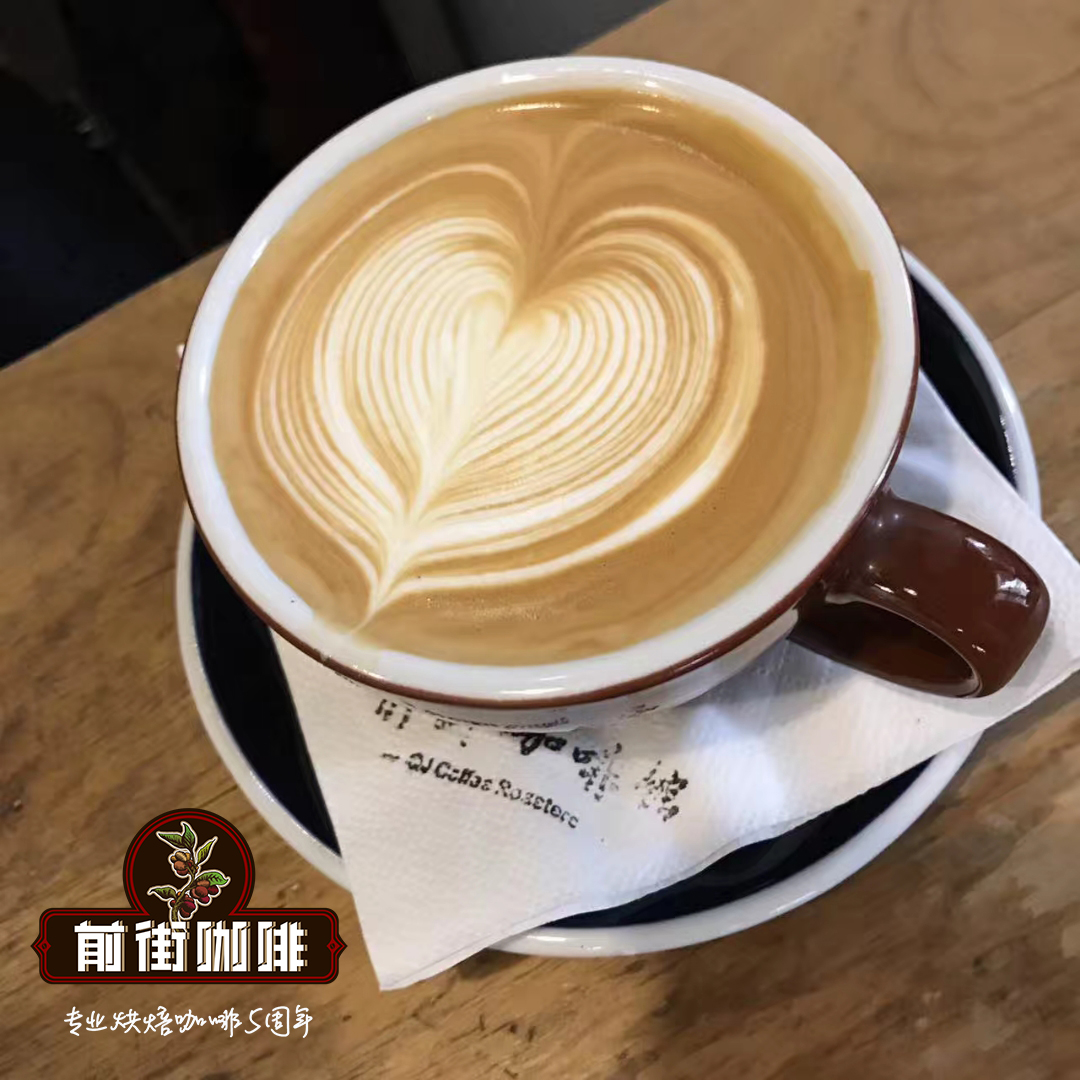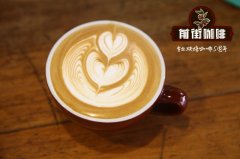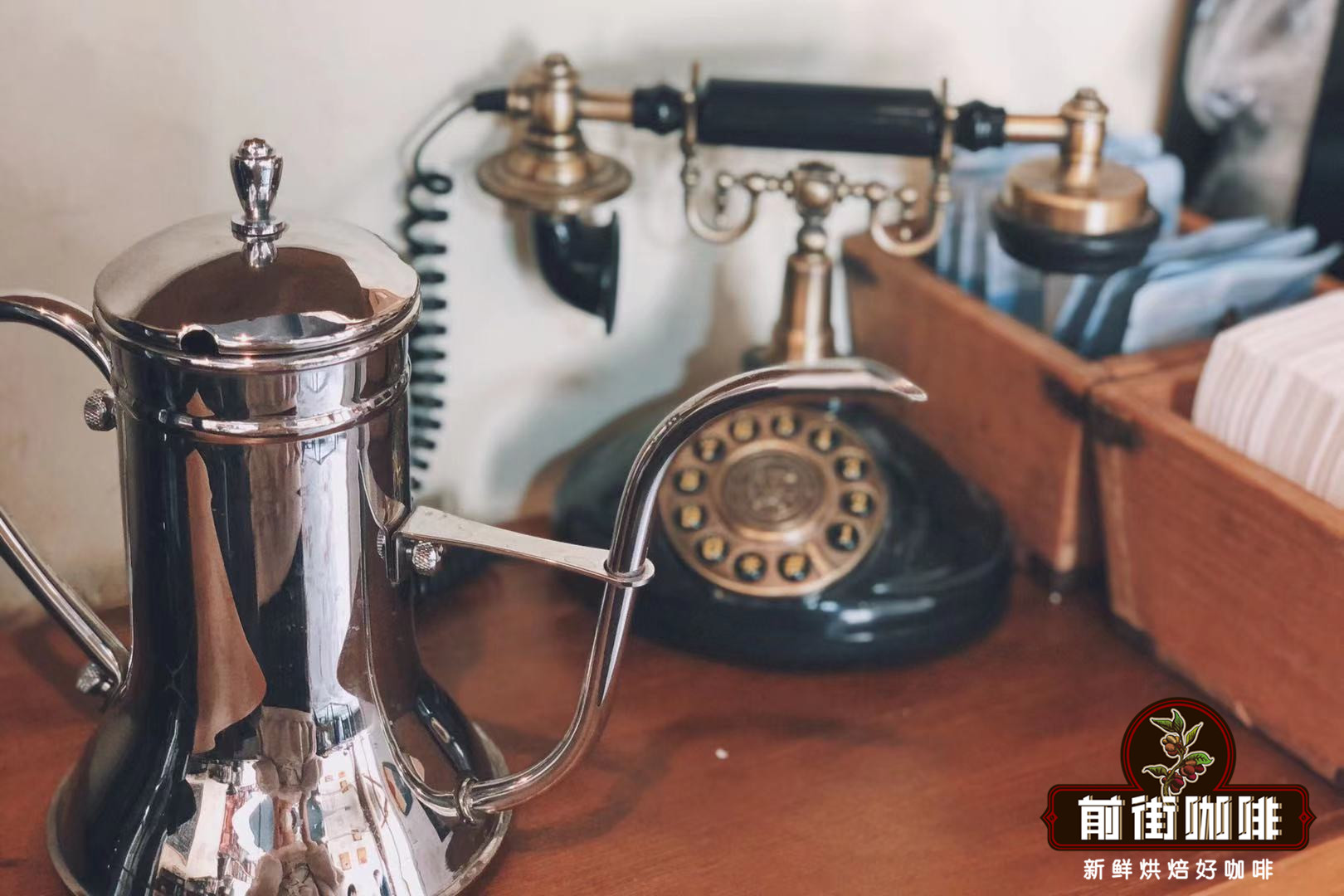Starbucks flat white- Frappy how to read, how to order Frappy, how to order good

Professional coffee knowledge exchange more coffee bean information please follow the coffee workshop (Wechat official account cafe_style)
Fu Ruibai, the Chinese call her "Little White Coffee", McCafe calls her "fresh Milk espresso", but her origin is actually in Australia and New Zealand. During World War II, a large number of Italians fled from Europe to Australia and New Zealand, two neutral countries, passing on the espresso culture together. As to who came up with this first, it can be said to be in a state of "no compromise": Australians say it was invented in Sydney in the mid-1980s, and New Zealanders said it was invented in Auckland in the late 1980s. But in any case, Fu Ruibai's details are in these two places. Frappie is also a form of Italian coffee, a variation between Cappuccino and cafe Latte (hereinafter referred to as Latte). In terms of the proportion of milk caffeine, Freibai and Cappuccino are very similar, that is, slightly thicker than Latte, but in terms of milk bubbles, Freibai's texture is similar to Latte's microfoam rather than Cappuccino's dry foam. In other words, the translation of McCafe is more decent, because "fresh milk espresso" is indeed stronger than "fresh milk coffee" (Latte), but the two are similar. Immediately after its emergence, this kind of coffee was welcomed by the people of Australia and New Zealand, coupled with the fact that Australia, as one of the host countries of important international coffee events, is increasingly competing with Italy in the coffee industry, making Furebai enter the European market. Coffee shops in Britain, Germany and other cafes have listed Ruibai one after another.
Because of the similarities, people often confuse Latte with Furebai, Wikipedia once appeared "A Flat white is actually identical to a Latte, except the serving size and format" and so on, which has now been corrected; and some well-known coffee shop owners have openly said that Flat white and latte are the same, but "the Australians insist on changing her name." In fact, in addition to the difference in the proportion of milk coffee, the thickness of milk instant noodles is also different between Latte and Fulibai. By Australian standards, a glass of Latte should be filled in a thick glass with no ears, and the foam must be at least 1cm or more thick, and some will have bubbles an inch thick. The thick baby milk foams create the delicate and layered feel of Latte, while the relatively narrow glass gives a proper blend between coffee and milk foam, making it feel as smooth as milk foam when drinking. As for fragrant white, although they are all young, according to Australian standards, to use a wide-mouth tile cup, the bubble body must be below 5mm, instant noodles do not see large bubble grains, and a high degree of bubble caffeine fusion can be considered qualified. What the thin young bubble brings to the taster is different from Latte's "cotton", but silky "slippery". What's more, the Australian demand for milk foam goes further to the specification of "there are still flowers at the bottom of the cup", which is not easy for the fragrant white, which is young and thin. As a matter of fact, it is very difficult for Australians to find a qualified Latte in Hong Kong. in most stores, something called Latte in a large tile cup is actually a flat white that is too thick and does not mix well enough. Of course, some people will say, why does it have to be measured by Australian standards when it is clearly "Italian coffee"? No, I just want to point out that Freddy and Latte are really two different things to others. I don't know much about the standard. It tastes good.
Another misunderstanding about Furebai originated in China. It is the source of Chinese coffee lovers who have heart to draw a color picture of Italian coffee ingredients. The whole picture is simple and concise. It makes people learn what Cappuccino, Latte and Americano are all about in a minute. It is admirable. However, when I looked at that picture for the first time, I found a place that bothered me very much: how come there is no bubble in the fragrant white? Once again, I am not an expert, just an enthusiast. I may know less about coffee than the cartographer, but Frappy is my favorite milky coffee, and I have drunk Frappie in Australia in detail. I am confident that I am right! Yes, there is a bubble in Fureibai, and the Chinese may have this misunderstanding to translate it into "white coffee". The real white coffee White coffee is Americano with flower milk, which is the kind that usually serves coffee and milk separately in a western restaurant. On this point, let me Quote a passage from Coffee Info: "Unlike many people think, the flat white does have foam on top..." Be prepared to be served a latte without foam when ordering a flat white in most places. "
I'm not very good at making coffee. I can also talk about Fuluibai's practice, as long as it's not called making a cup for you to drink, XD. Generally speaking, you will use 1 shot espresso (Australians will use two shot), and then add milk foam to 65-69 degrees. Wait, this is bullshit! About how to hit the milk foam? How to distinguish the milk foam of Cappuccino, Latte and Ruibai? The teaching clip seen in Youtube says that Fu Ruibai's bubble is a dip in milking noodles; Latte is a little deeper and longer than Furebai, so he soaks a little more; Cappu hits deeper, so he soaks thicker. Generally speaking, it will be more clear if you look at the details on Youtube and Freddie Foam. In addition, some stores will also use the shape of the cup will also affect the performance of milk foam, which is also a traditional practice in Australia. Cappuccino uses a narrow coffee cup so that when the foam is poured in, it naturally forces develop to produce thick bubbles; Frappy uses a wide cup of the same capacity, so that the foam is scattered over a large area of coffee noodles to form thin bubbles, while Latte uses a glass with a larger capacity.
There are also many people in the world, such as me, who have little knowledge of coffee and seldom practice it, and would rather go to a coffee shop when they want to drink it. So, where can there be a delicious fragrant white? The standard answer is Australia, of course! I dare to say that if you walk into any cafe in Sydney, Australia, you can have a decent cup of fragrant white. However, it seems a bit troublesome to drink coffee. Although Frappie is not a very popular variety in Hong Kong, there are several cafes that have decent Australian coffee. For large chains, only McCafe has it, so you don't have to ask whether it tastes good or not. If you have a pursuit of quality, you should look for a boutique coffee shop with Australian coffee as the theme. Coco Espresso in Queen's Road Central, Barista Jam in Suhang Street, 18 Grams in small chain stores, and Caf é Corridor in Causeway Bay are all very good. Among them, the fragrant white milk foam washed out by Coco Espresso is only about the thickness of 2--3mm, and it lasts for a long time until the bottom of the cup, which is the choice of Must Go recommended by my younger brother!
Okay, think about what you can say next time. The knowledge of half a bucket of water is really a little shameful to say.
Important Notice :
前街咖啡 FrontStreet Coffee has moved to new addredd:
FrontStreet Coffee Address: 315,Donghua East Road,GuangZhou
Tel:020 38364473
- Prev

How do you pronounce Friby? Frieby? Tomihiro? Why does Flat White translate like this?
Professional coffee knowledge exchange More coffee bean information Please pay attention to coffee workshop (Weixin Official Accounts cafe_style) I love Furey white very much, often talk about Furey white here, but also constantly compare the Furey white of each store is delicious or not, what is Furey white? The following is a summary of the information I heard in Australia and the information I found online.
- Next

The difference between Furei White Coffee and Latte Coffee introduction to the taste and flavor of Flat White Australian white coffee
Professional coffee knowledge exchange more coffee bean information please follow the coffee workshop (Wechat official account cafe_style) Starbucks stores in North America have begun to sell Fragrance White. Just through the Chinese name, I don't know what kind of coffee this is. Then I looked at English and wrote FlatW impressively.
Related
- Detailed explanation of Jadeite planting Land in Panamanian Jadeite Manor introduction to the grading system of Jadeite competitive bidding, Red bid, Green bid and Rose Summer
- Story of Coffee planting in Brenka region of Costa Rica Stonehenge Manor anaerobic heavy honey treatment of flavor mouth
- What's on the barrel of Blue Mountain Coffee beans?
- Can American coffee also pull flowers? How to use hot American style to pull out a good-looking pattern?
- Can you make a cold extract with coffee beans? What is the right proportion for cold-extracted coffee formula?
- Indonesian PWN Gold Mandrine Coffee Origin Features Flavor How to Chong? Mandolin coffee is American.
- A brief introduction to the flavor characteristics of Brazilian yellow bourbon coffee beans
- What is the effect of different water quality on the flavor of cold-extracted coffee? What kind of water is best for brewing coffee?
- Why do you think of Rose Summer whenever you mention Panamanian coffee?
- Introduction to the characteristics of authentic blue mountain coffee bean producing areas? What is the CIB Coffee Authority in Jamaica?

